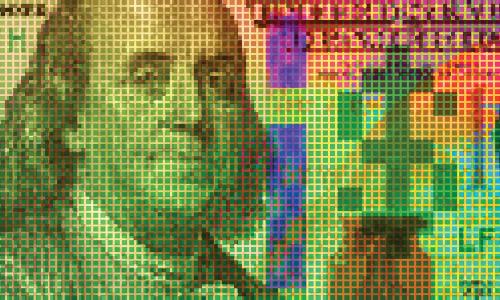The paper summarized here is part of the spring 2025 edition of the Brookings Papers on Economic Activity, the leading conference series and journal in economics for timely, cutting-edge research about real-world policy issues. Research findings are presented in a clear and accessible style to maximize their impact on economic understanding and policymaking. The editors are Brookings Nonresident Senior Fellows Janice Eberly and Jón Steinsson.
See the spring 2025 BPEA event page to watch paper presentations and read summaries of all the papers from this edition. Submit a proposal to present at a future BPEA conference here.
The business cycle associated with the COVID pandemic was unique, according to a paper discussed at the Brookings Papers on Economic Activity (BPEA) conference on March 28. It was by far the deepest and shortest recession since World War II and was followed by several quarters of rapid recovery.
“Given the magnitude of the COVID shock, it is remarkable how limited its lingering effects seem to have been, at least at the level of macroeconomic aggregates,” write the authors, James H. Stock of Harvard University and Mark W. Watson of Princeton University.
“Five years ago … the economy was collapsing at a breathtaking pace,” they write. Weekly claims for unemployment insurance, which usually run between 200,000 and 300,000, skyrocketed to nearly 6 million by the last week of March 2020. As consumers stayed home, inflation-adjusted consumption plunged 6.6% that month and 11% in April 2020.
But the recession lasted only two months and the initial recovery was nearly as rapid as the collapse, they write. In the two months after the economy hit bottom that April, consumption grew by 14% and the unemployment rate fell by 2 percentage points.
In their paper—“Recovering from COVID”—the authors use a simple empirical model to examine the behavior of more than 100 quarterly and monthly economic statistics.
They conclude, first, that the COVID-19 recovery was unprecedented not only in its rapid speed but also in its sectoral shifts in consumption, production, and employment. There was “an unprecedented sharp shift in consumption away from in-person services like restaurants and toward goods, especially goods that can be consumed at home and outdoors,” they write.
Second, they attribute the anomalous behavior of the recovery to the fact that the downturn was caused by “a single novel aggregate shock”—the pandemic. Macroeconomic dynamics returned to normal as people emerged from isolation and as COVID deaths diminished as a result of self-protective measures such as masking and, eventually, vaccination.
And, third, “it appears that the pre-COVID macroeconomic dynamics have returned or, more precisely, they never disappeared or changed, they were just masked by the massive COVID shock,” they write. By 2023, “conventional dynamics took over and … the expansion largely looked like a normal expansion.”
Nevertheless, they note, there are reasons to suspect that COVID introduced or accelerated structural economic changes including more-prevalent remote work, a persistent increase in the number of new businesses, and greater attention to supply-chain resiliency. COVID also affected the labor force through the deaths of a substantial number of workers, early retirements, and long COVID symptoms (especially among older workers).
And the three stimulus plans enacted by the federal government left a legacy of an increased ratio of debt-to-GDP (gross domestic product), they note.
“There are also less-tangible effects, such as the loss of trust in government,” they write.
CITATION
Stock, James H., and Mark W. Watson. 2025. “Recovering from COVID.” BPEA Conference Draft, Spring.
-
Acknowledgements and disclosures
David Skidmore authored the summary language for this paper.
The Brookings Institution is committed to quality, independence, and impact.
We are supported by a diverse array of funders. In line with our values and policies, each Brookings publication represents the sole views of its author(s).




